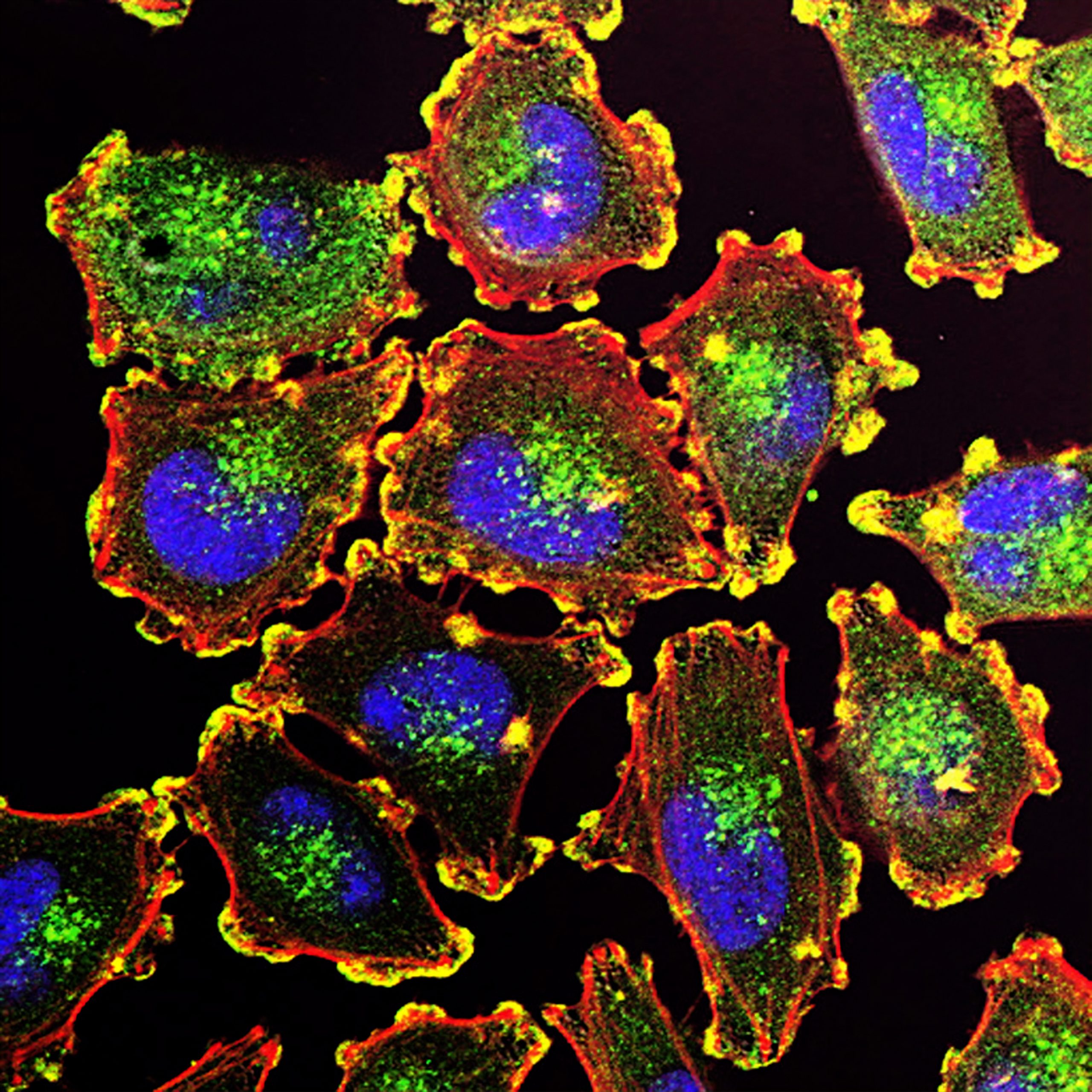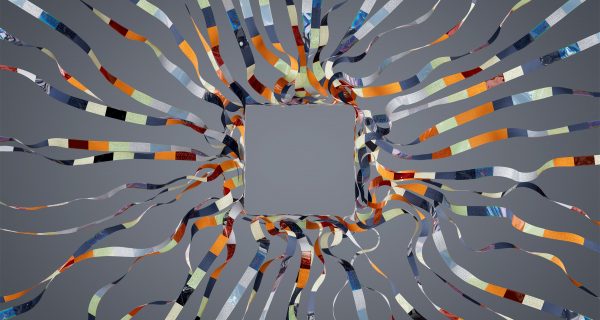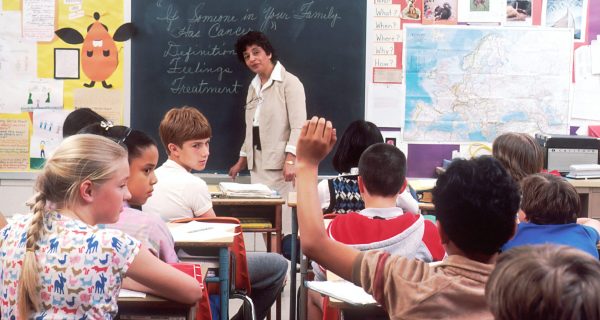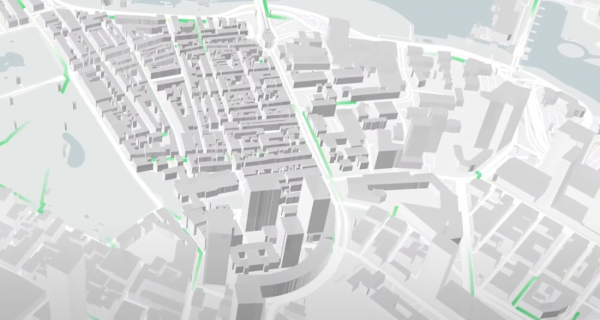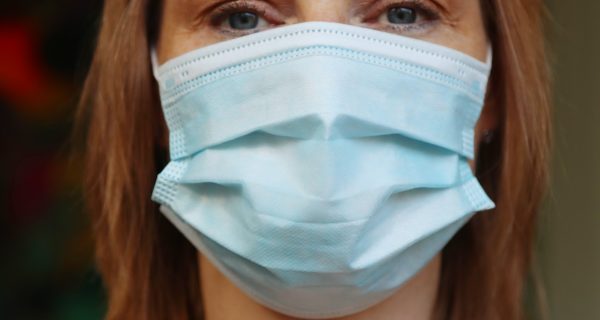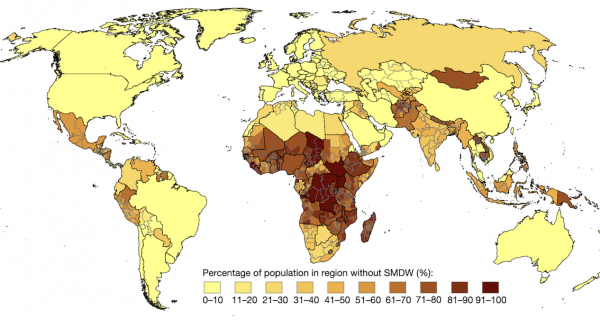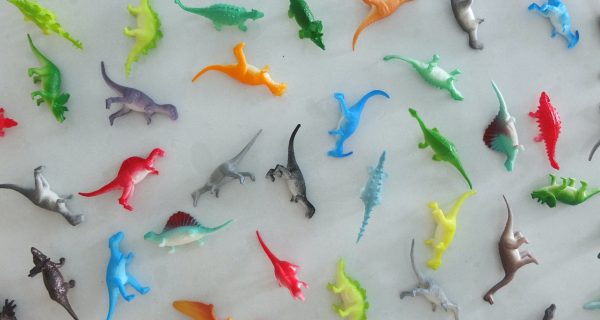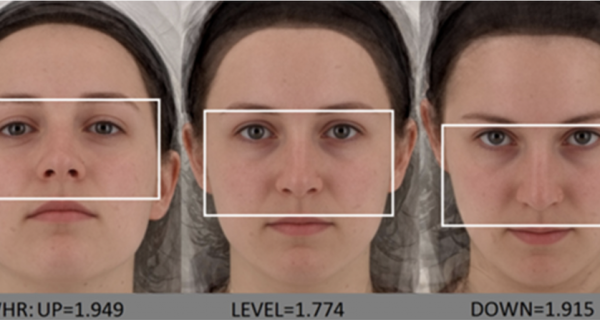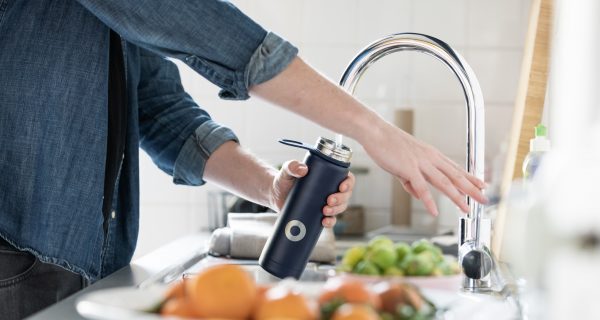Doctors working along an AI system can detect breast cancer better than when doing it alone
A new study shows that artificial intelligence can handle more than half of scans automatically, thus heavily reducing radiologists’ workloads.

Machine learning has demonstrated the potential to revolutionize the health industry. However, one of the main drawbacks is that in many cases, the doctor or medical staff needs to evaluate all the results produced by using AI, thus not alleviating their work.
In a recent large-scale study, published in The Lancet Digital Health, researchers compare an AI’s performance in breast cancer screening according to whether it’s used alone or to assist a human expert. The aim is that AI systems could potentially save lives by detecting cancers doctors miss, freeing up radiologists’ time to see more patients and therefore ease the burden in places where there is a lack of specialists.
To do so the authors of the paper carry out a retrospective analysis study, where the screening performance of a single unaided radiologist based on their personal clinical decisions in the screening programme (figure 1A) is compared with that of a standalone AI system (figure 1B) and a decision referral approach (figure 1C) that pairs normal triage and cancer detection via a safety-net warning system. The decision of the radiologist is recorded during clinical practice without AI support. The analyses in this study is restricted to screen-detected cancers and follow-up-proven normal mammography exams. The authors then simulate a screening scenario in which, in a first step, the AI system classifies whether a study is normal or suspicious for cancer and provides at the same time an indication of its confidence on its classification. Both suspicious studies and studies for which the algorithm is unconfident and required human interpretation is then given to the radiologist for review without indication of the AI-system classifications.
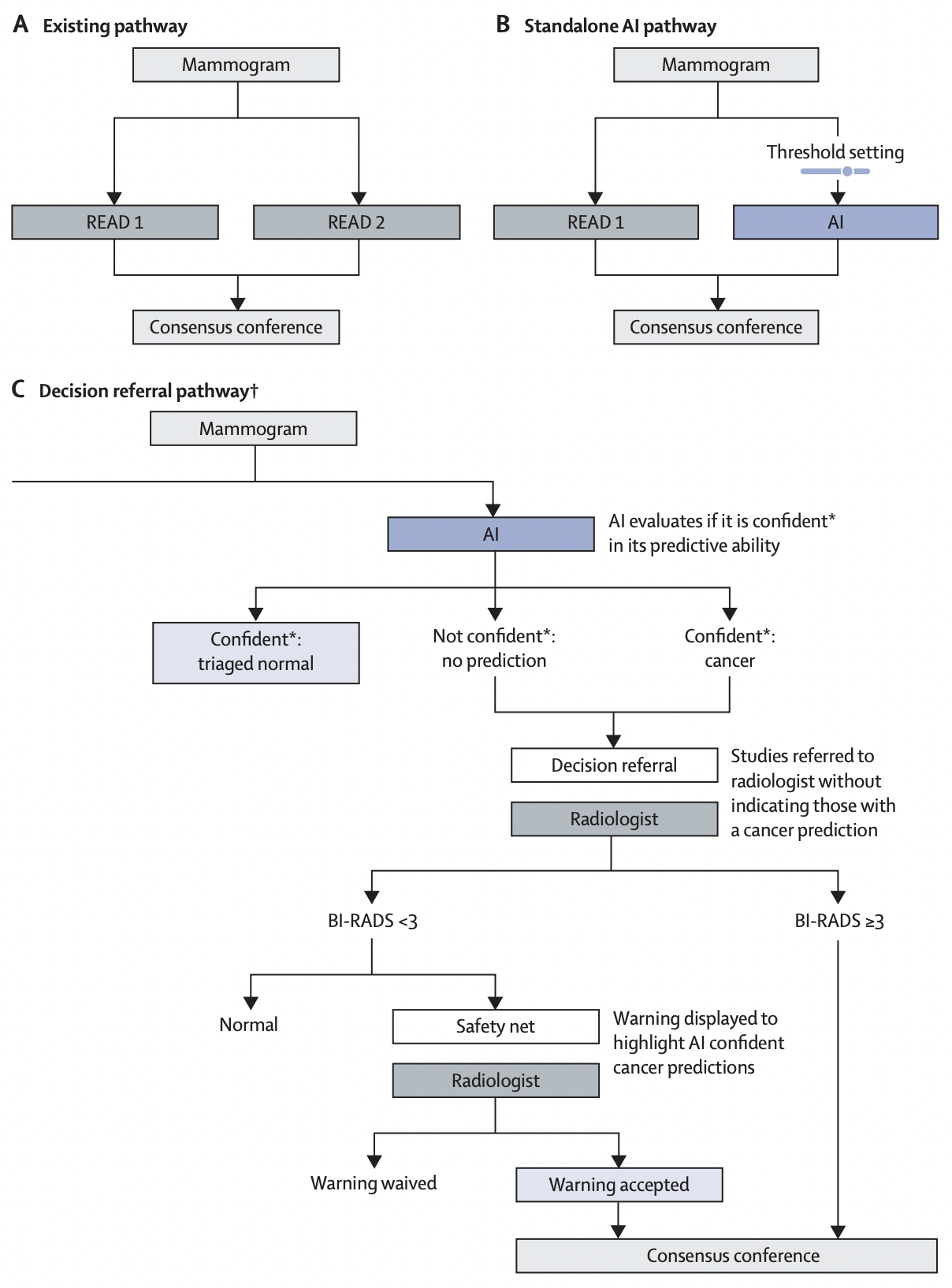
The dataset used in the study consisted of 1193197 full-field, digital mammography studies carried out between Jan 1, 2007, and Dec 31, 2020, from 453,104 women, data which were retrieved from 8 German screening sites.
The results show that when the doctor and AI were working together, there is a 2.6% improvement when detecting breast cancer than when the doctor is working alone and raised fewer false alarms. The AI system accomplished this while automatically setting aside scans that it had classified as confidently normal (non-cancerous) – 63% of all mammograms. This intense streamlining could slash radiologists’ workloads.
What is worth mentioning is that in standalone mode, the AI system achieved a sensitivity of 84·6% and a specificity of 91·3% on external data, performing less accurately than the average single radiologist.
